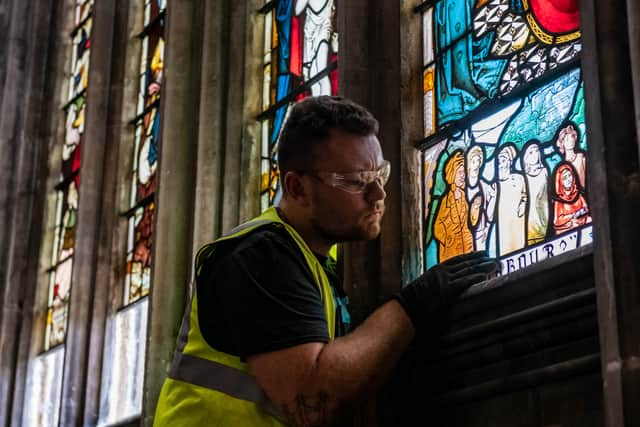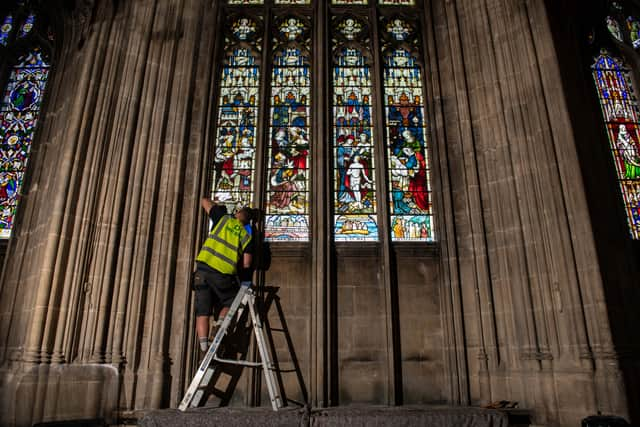Church replaces stained glass window of slave trader with Jesus ‘in multiple ethnicities’ and refugees in boat
and live on Freeview channel 276
A church has replaced a stained glass window of slave trader Edward Colston with one featuring Jesus “in multiple ethnicities” and refugees in a boat. St Mary Redcliffe church in Bristol removed four stained-glass panels dedicated to Colston following the toppling of his statue in 2020.
The window was temporarily replaced with plain panels and the church invited the public to submit new designs in a competition. A local youngster Ealish Swift won the contest with a series of images showing a “non-white” Jesus in a variety of situations.
Advertisement
Hide AdAdvertisement
Hide AdPermission for the windows to be replaced was granted by the Church of England’s court in Bristol - and they have now been fitted. They show a “non-white” Jesus in a boat with refugees and Bristol Bus Boycott campaigners.


The Bristol Bus Boycott of 1963 arose from the refusal of the Bristol Omnibus Company to employ black or Asian bus crews in the city - at the time, there was widespread racial discrimination in housing and employment against people of colour. Led by youth worker Paul Stephenson and the West Indian Development Council, the boycott of the company’s buses by Bristolians lasted for four months until the company backed down and overturned the colour bar.


Although prompted by the toppling of the Colston statue, the replacement of the window was part of a larger process at St Mary Redcliffe in the ongoing exploration of and engagement with contested heritage which will continue over the coming months and years. The grade I-listed church is deeply rooted in British history, having been described by Queen Elizabeth I upon her visit in 1574 as “the fairest, goodliest and most famous parish church in England”.
A spokesperson from the church said they launched the competition as “part of an ongoing process of reflection and action to ensure that today’s church building echoes St Mary Redcliffe’s stated values and is welcoming to all” and the new designs referred to Bristol’s ‘’rich multicultural past and present’’.
Comment Guidelines
National World encourages reader discussion on our stories. User feedback, insights and back-and-forth exchanges add a rich layer of context to reporting. Please review our Community Guidelines before commenting.
